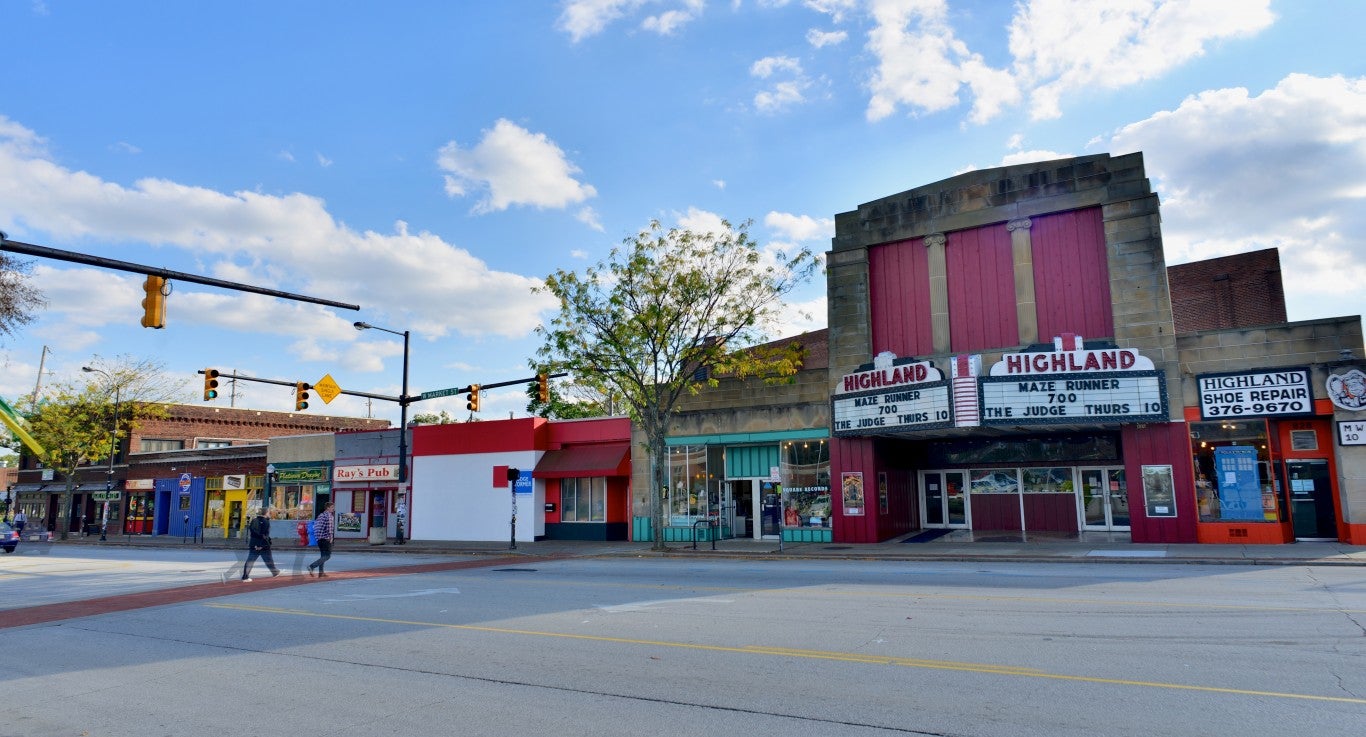Promotional and branding program to strengthen the housing market in the Triangle neighborhood of North Winton Village, a target middle neighborhood in Rochester
Great Streets Initiative
Eleven neighborhood business districts
- Repurposed existing federal Community Development Block Grant (CDBG) of $600,000 to concentrate on façade improvements within eleven business districts over a two-year period
- Awarded up to $30,000 to more than 20 individual façade improvement grant recipients
- Avoided increasing municipal operating budgets or capital budgets by prioritizing ongoing street redesign within the business districts to maximize efficiency of public services.
- Increased municipal income taxes by 0.25 percent to fund repaving both within the corridors and elsewhere
Select Models Goals
- Expand strategic and comprehensive urban planning
- Reestablish neighborhood business districts as active community hubs
- Improve civic capacity and transcend public sector silos
- Improve aesthetics, urban design, and public space
- Public management reforms included restructuring reporting structures to bring together the Planning and Economic Development departments as well as the Public Works department to align their capacities in pursuit of a shared revitalization strategy.
- The initiative concentrates the ongoing business of the city (e.g., street redesign, bike lanes and pedestrian infrastructure, resurfacing, plowing, street trees, streetlight improvements) for significant and visible change in all eleven corridors without significant additional capital investment in all corridors.
The initiative is notable for putting into practice many of the strategies understood by experts to be effective for legacy cities. Neighborhood strategies are tailored to local market conditions and build on the unique historic and local characteristics. It also leverages existing federal CDBG funding to strengthen the urban core while engaging more deeply with community residents and businesses.
As the primary pilot project for the city’s new Office of Integrated Development, the Great Streets Initiative demonstrates how comprehensive and strategic planning can be implemented incrementally in a city with significantly constrained public capacity.
The approach reflects an awareness that Akron neighborhoods compete for the region’s residents, who select neighborhoods in which to live, work, and shop.
Strategies Utilized
A city and nonprofit partnership model for neighborhood planning and community development
Elimination of off-street parking minimums to promote citywide development, density, and the use of alternative transportation modes



![Andre Carrotflower [CC BY-SA 3.0 (https://creativecommons.org/licenses/by-sa/3.0)]](https://www.lincolninst.edu/sites/default/files/styles/legacycities_init_teaser/public/sources/legacy-cities/banners/elmwoodave.jpg?itok=pJ7F-r3T)